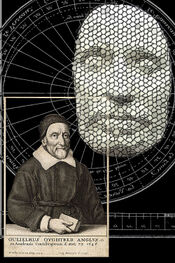Template:Are You Sure/January 30: Difference between revisions
No edit summary |
No edit summary |
||
| Line 2: | Line 2: | ||
• ... that the corpse of '''[[Oliver Cromwell (nonfiction)|Oliver Cromwell]]''' was ritually executed more than two years after his death, on the 12th anniversary of the execution of the monarch he himself deposed?<br> | • ... that the corpse of '''[[Oliver Cromwell (nonfiction)|Oliver Cromwell]]''' was ritually executed more than two years after his death, on the 12th anniversary of the execution of the monarch he himself deposed?<br> | ||
• ... that inventor and engineer '''[[James Watt (nonfiction)|James Watt]]''' realized that contemporary steam engine designs wasted a great deal of energy by repeatedly cooling and reheating the cylinder, and that he consequently invented the separate condenser, which avoided this waste of energy and radically improved the power, efficiency, and cost-effectiveness of steam engines?<br> | • ... that inventor and engineer '''[[James Watt (nonfiction)|James Watt]]''' realized that contemporary steam engine designs wasted a great deal of energy by repeatedly cooling and reheating the cylinder, and that he consequently invented the separate condenser, which avoided this waste of energy and radically improved the power, efficiency, and cost-effectiveness of steam engines?<br> | ||
• ... that mathematician and Roman Catholic Cardinal '''[[Michelangelo Ricci (nonfiction)|Michelangelo Ricci]]''''s published mathematical work is summarized in a treatise of nineteen pages, ''Exercitatio geometrica, de maximis et minimis'' (1666), in which he describes the maxima of functions | • ... that mathematician and Roman Catholic Cardinal '''[[Michelangelo Ricci (nonfiction)|Michelangelo Ricci]]''''s published mathematical work is summarized in a treatise of nineteen pages, ''Exercitatio geometrica, de maximis et minimis'' (1666), in which he describes the maxima of functions, as well as tangents to curves, using methods that are an early form of induction, and that this treatise was much admired by his contemporaries?<br> | ||
• ... that artist '''[[Gil Kane (nonfiction)|Gil Kane]]''' pioneered the [[Graphic novel (nonfiction)|graphic novel]] with his books ''His Name is...Savage'' (1968) and ''Blackmark'' (1971)?<br> | • ... that artist '''[[Gil Kane (nonfiction)|Gil Kane]]''' pioneered the [[Graphic novel (nonfiction)|graphic novel]] with his books ''His Name is...Savage'' (1968) and ''Blackmark'' (1971)?<br> | ||
Revision as of 21:29, 30 January 2020

• ... that the corpse of Oliver Cromwell was ritually executed more than two years after his death, on the 12th anniversary of the execution of the monarch he himself deposed?
• ... that inventor and engineer James Watt realized that contemporary steam engine designs wasted a great deal of energy by repeatedly cooling and reheating the cylinder, and that he consequently invented the separate condenser, which avoided this waste of energy and radically improved the power, efficiency, and cost-effectiveness of steam engines?
• ... that mathematician and Roman Catholic Cardinal Michelangelo Ricci's published mathematical work is summarized in a treatise of nineteen pages, Exercitatio geometrica, de maximis et minimis (1666), in which he describes the maxima of functions, as well as tangents to curves, using methods that are an early form of induction, and that this treatise was much admired by his contemporaries?
• ... that artist Gil Kane pioneered the graphic novel with his books His Name is...Savage (1968) and Blackmark (1971)?